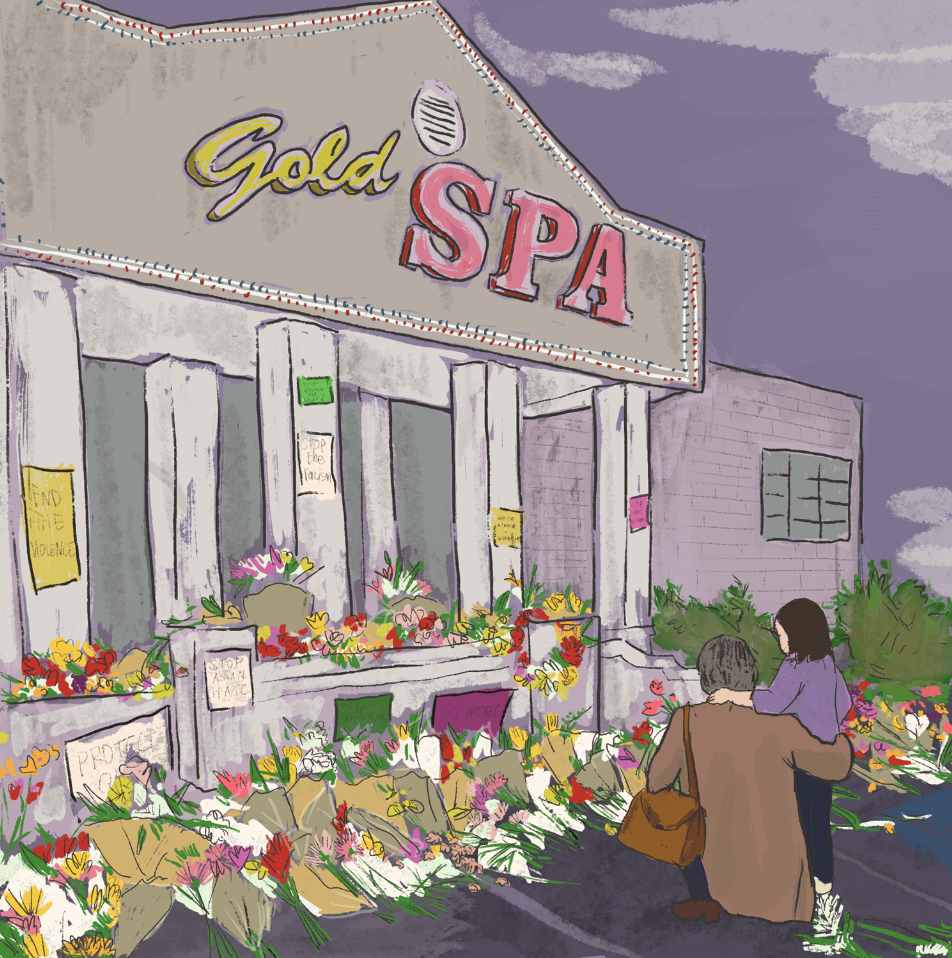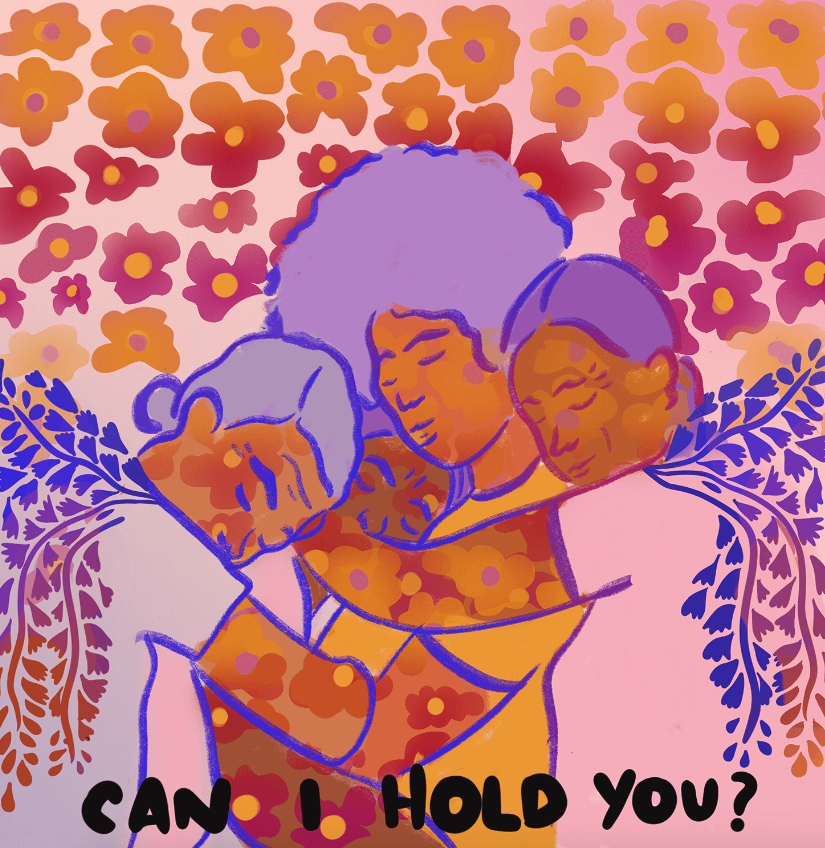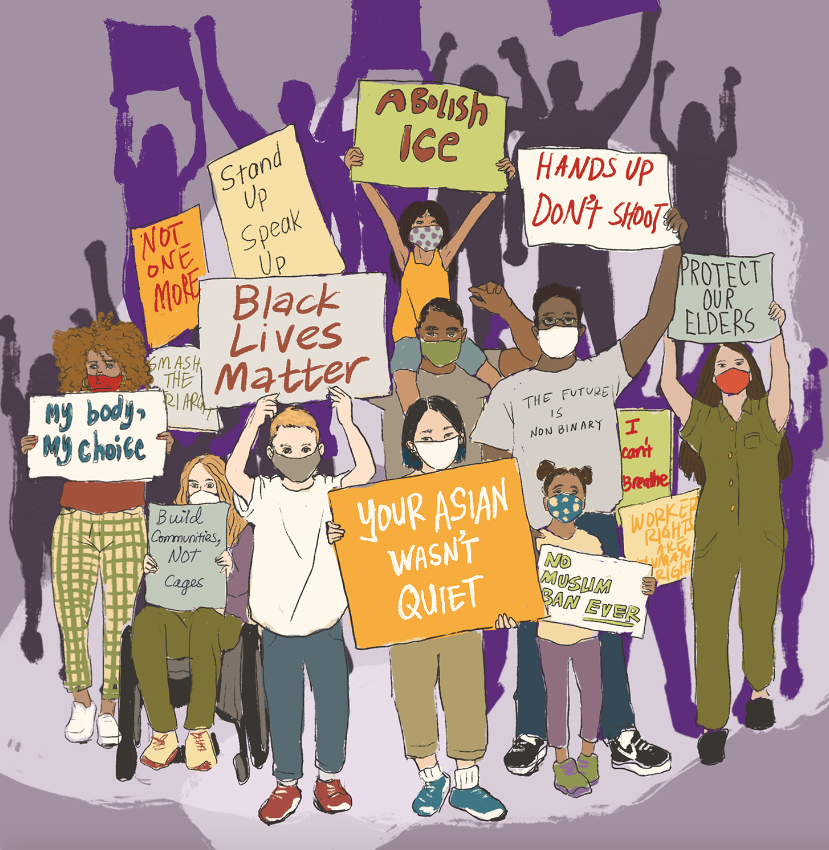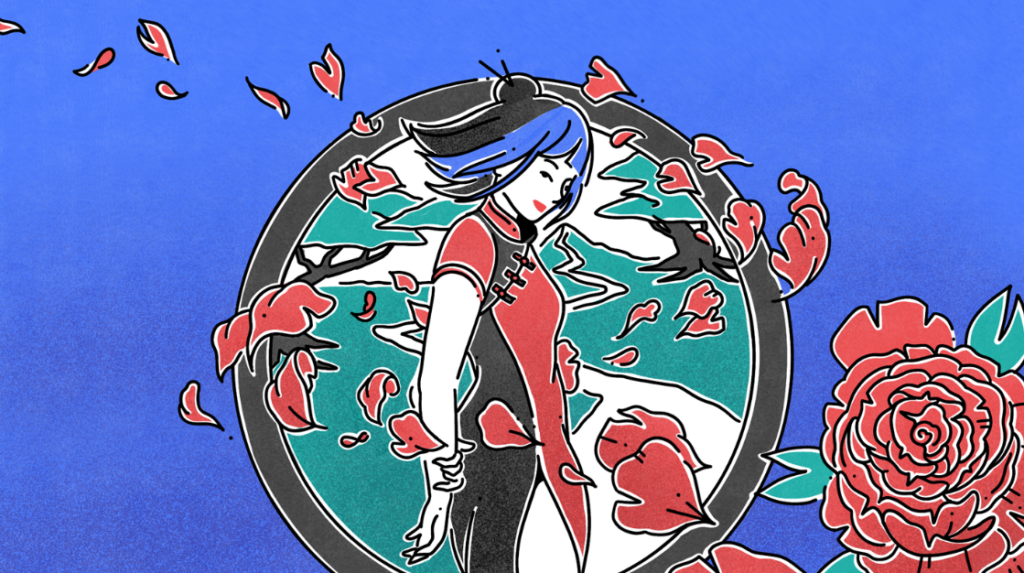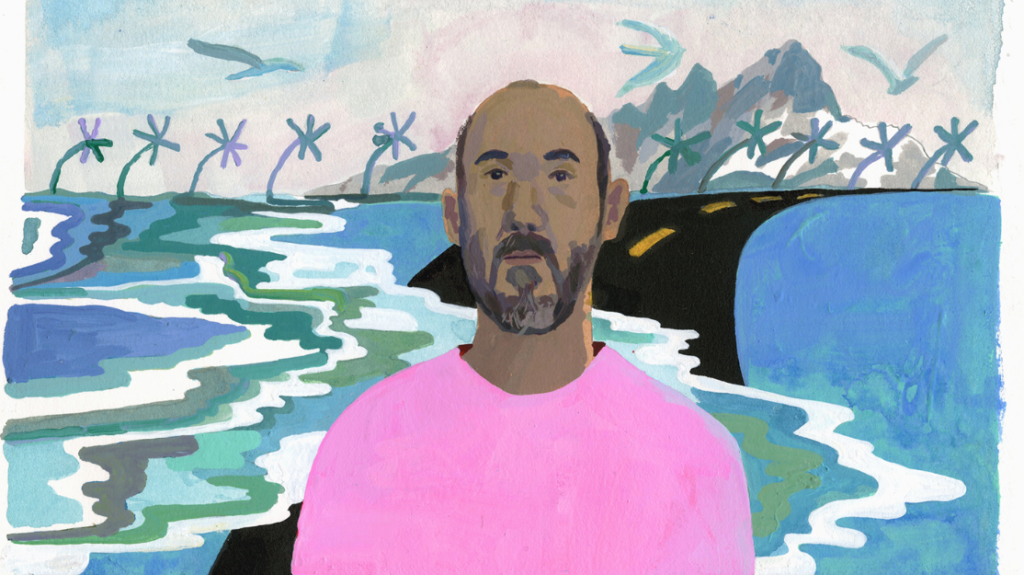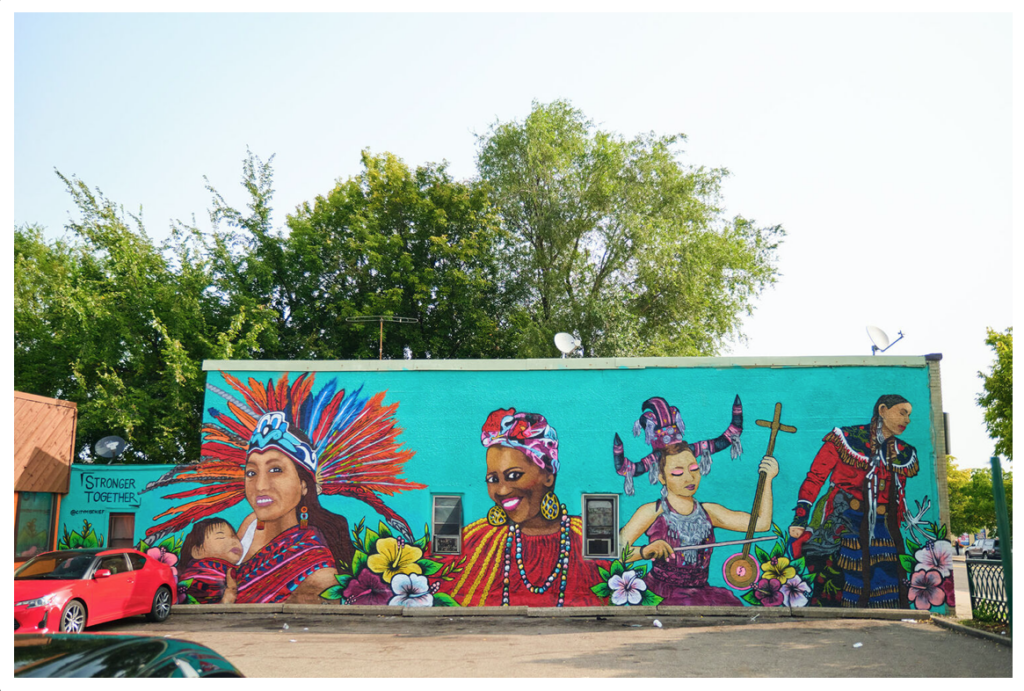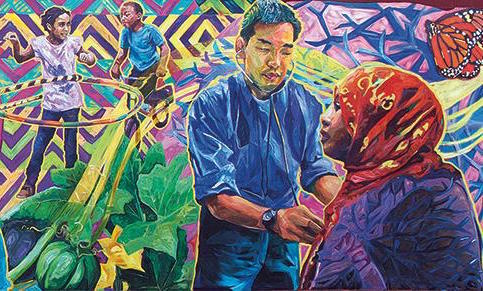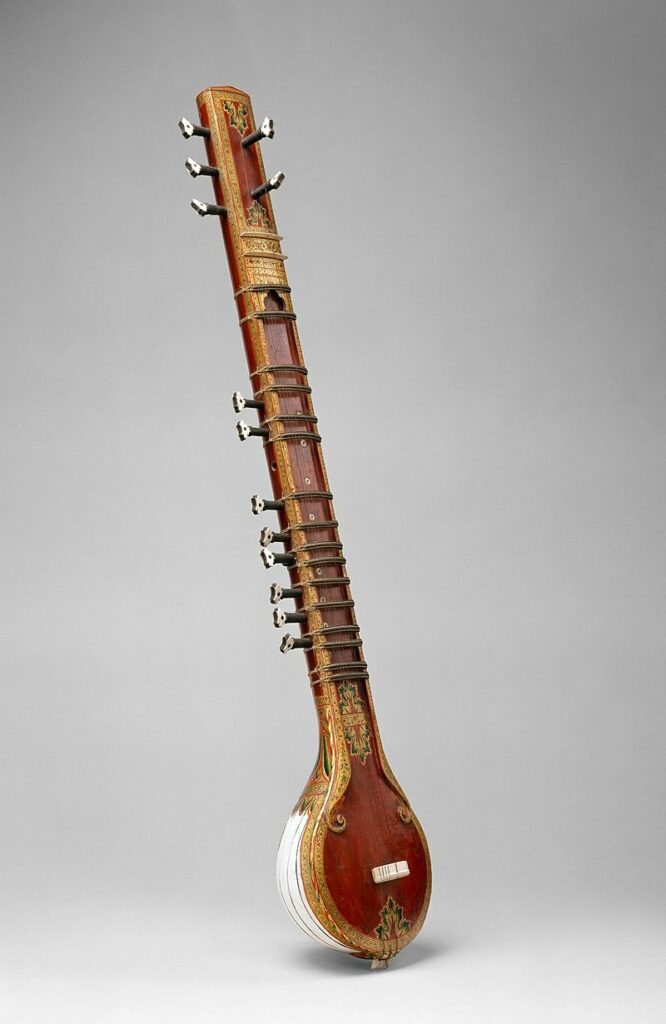Asian American art tells a story of pride, history, culture, and identity. It beautifully weaves cultural diversity and fusion, embracing the three times, present, past, and future. It tells the stories of families, of philosophy, and also it expresses the strength and resilience of the AAPI communities. Within this unbroken view, Asian American art also expresses the cultural identities of East Asia, South East Asia, South Asia, and beyond, welcoming collaboration from many cultural diasporas. In this blog post we will highlight the beautiful art of a few AAPI artists.
“Art has really been the way I have been able to understand both cultures, and to undo the wrongdoing of both cultures.”
~Bernice Bing, abstract/expressionist painter

Brenda Chi
“I am currently comforting and celebrating my AAPI heritage through food, celebration of AAPI culture, language, and my family. This can also be seen as a self-portrait, as much of my identity is being an AAPI artist, so everything connects. This illustration features some of my favorite childhood foods, listening and speaking in Cantonese, celebrating my ancestors’ beauty through my self-expression, burning joss paper, praying to my family to wish us well, gratitude to my family, and claiming my space as an American Born Chinese (ABC) woman. This piece is inspired by vintage Chinese cigarette advertisements, which I’ve interpreted into a more intentional Chinese American illustration, with colors inspired by Cantonese Rose patterned porcelain. As a second generation Chinese immigrant, I often find myself researching my own Cantonese heritage as much hasn’t been taught to me. As I create this art, I am also learning about my AAPI heritage, which I think is really healing for anyone in Asian diaspora.”
Brenda Chi is a multidisciplinary artist and art director based in Los Angeles. View more of Brenda’s work here: Portfolio / Instagram.
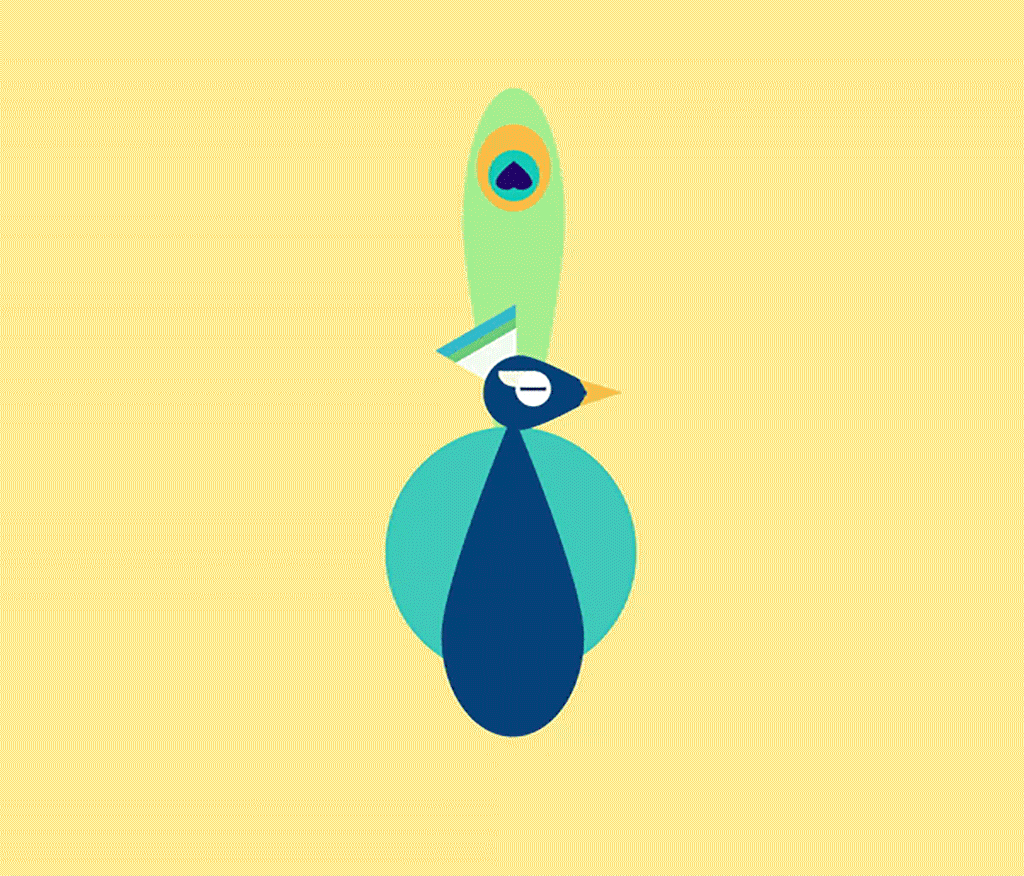
Ameena Fareeda / Eye Open at the Close
“Growing up Indian-Asian American, there were many instances in which I struggled with connecting to my identity. I would feel as though I played tug-of-war with my own Asian and American personas. As I got older, I learned to appreciate my culture and identity as a proud Asian American. The peacock is the national bird of India which symbolizes race, pride, and beauty. A peacock’s feathers are truly iconic. They spread not only for mating purposes, but also for means of boasting and protection. The feathers’ resemblance to eyes are known to be a symbol to ward off bad luck and attract positivity.
Eye Open at the Close represents how I navigate in today’s society as an Indian-Asian American. In light of the recent increase in hate crimes towards the AAPI community, it is vital to preserve and uplift the diversity, strengths, and uniqueness within the community. Eye Open at the Close raises awareness to the public eye and expresses how strong and beautiful the AAPI community truly is.”
Ameena Fareeda is an illustrator and designer based in Silver Spring, Maryland. View Ameena’s work here: Portfolio / Instagram.
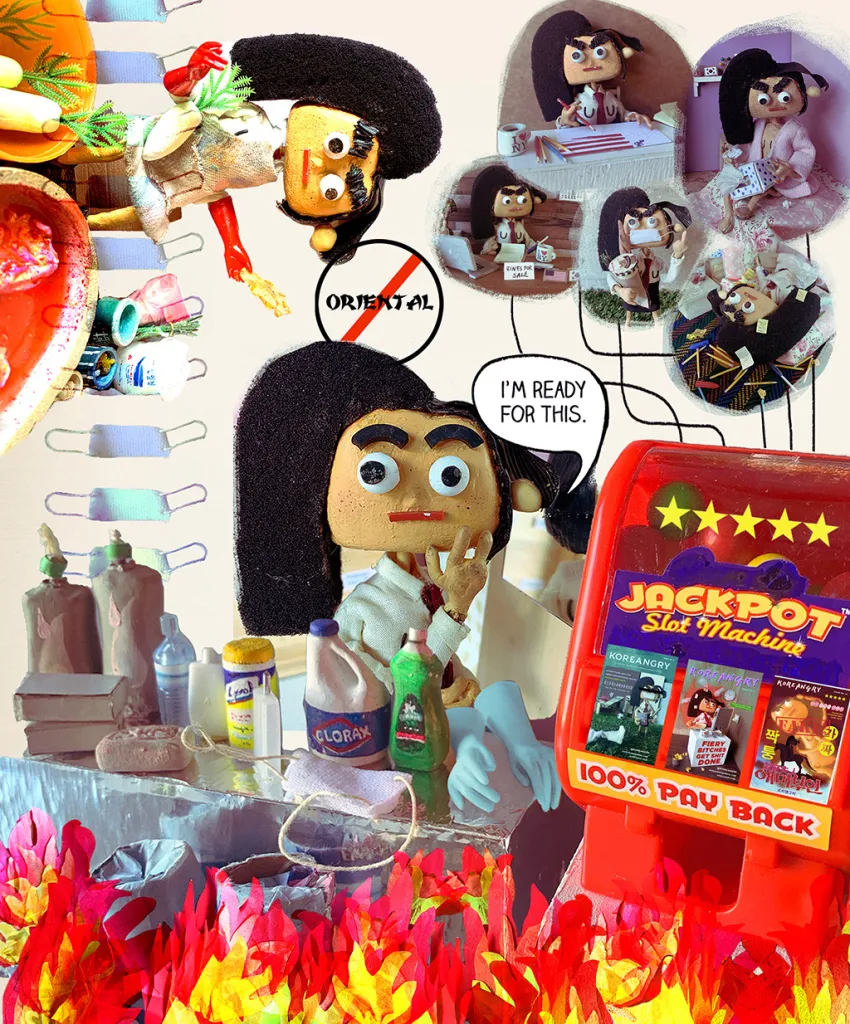
Eunsoo Jeong / Koreangry
“I’ve been making zines since 2016, and it has been my way of expressing myself. It started as a means to cope with my anxiety and depression but over the years, I’ve gained the confidence to own those narratives and turn it into humor. As a formerly undocumented immigrant, I had a hard time connecting with my identity as an Asian American, because I didn’t see many undocumented Asian Americans and didn’t know how to celebrate or to have pride within myself. In early 2020, I published Koreangry zine issue #8, that featured my Korean American history timeline after conducting self-driven research to understand and see what my roots were in this country. This showed me different perspectives on how we can define our identities regardless of what we are told to believe based on our immigration status in this country. By making zines based on my life experiences, I was able to connect with lots of AAPI folks across the country who could relate to my stories. During the grueling pandemic year, I felt isolated and lonelier than usual. Throughout that time, I pushed ideas that may challenge our AAPI communities (confronting anti-Blackness, defunding police), provided educational and informative comics (know your rights during protests, bystander intervention), and shared vulnerable confessions of my struggles and experiences living in this country today.
This artwork is a collage of my yearning desire to do ‘good’ despite the challenging struggles of being an immigrant today during the pandemic––the pressure of being a good, kind, nice, humble, grateful, by-the-book immigrant. Sharing my story through zine-making is how I connect with other AAPI groups, by accepting and rejecting, challenging, rebuilding, and redefining what our identities could be.”
Eunsoo Jeong is an artist based in Los Angeles. View more of Eunsoo’s work here: Portfolio / Instagram.
By creating art we honor our ancestors, respect our cultures, and learn about other cultures. Creating art is a way to promote peace and freedom of expression. It joins forces, strengthens roots, and leaves a wider and beautiful landscape for future generations to enjoy. Art is our voice, heart, and soul, to create art means to be present with all of who you are.
Heritage Art Vocabulary in Mandarin
- 艺术 ( Yi shu ) – Art
- 文化 ( Wen hua ) – Culture
- 画画 ( Hua hua ) – Drawing
- 戏剧 ( Xi ju ) – Drama
- 表演 (Biao yan) – Performance
Reference:https://www.yesmagazine.org/social-justice/2021/05/28/asian-american-artists-aapi-heritage

